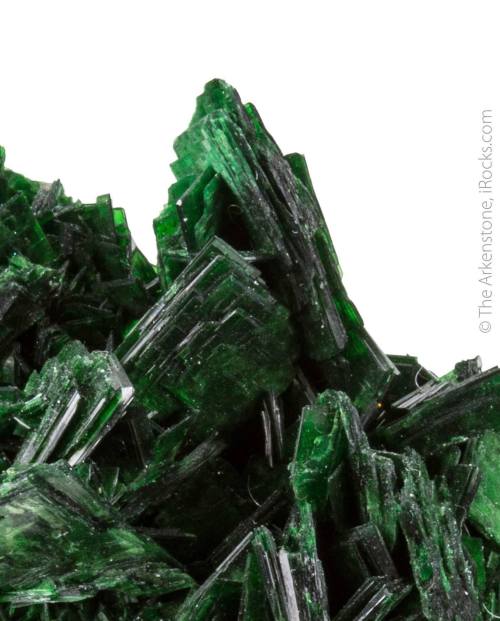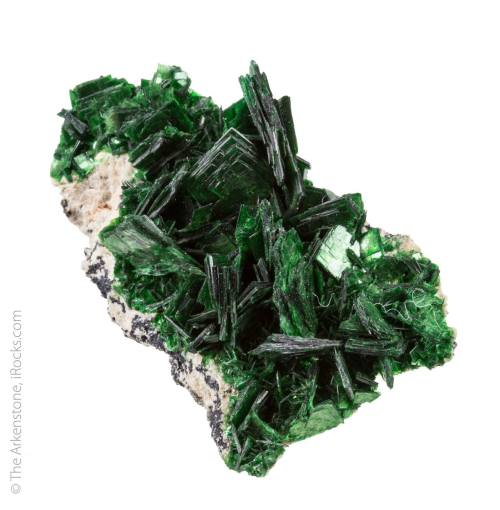MetatorbeniteThese beautiful green blades (snapped from 2 directions, 7.7 x 4.3 x 2.8 cm) were mined
MetatorbeniteThese beautiful green blades (snapped from 2 directions, 7.7 x 4.3 x 2.8 cm) were mined in the Katanga copper tract in the Democratic Republic of Congo in the 1960’s during uranium exploration, and are an example of the best colour displayed by this radioactive mineral. Named after a Swedish chemist, torbernite is born in granites which concentrate the world’s radioactive (amongst other) elements that don’t fit into the common mantle minerals. The granites then spit out fluids containing these elements (which don’t really fit in the common granitic minerals either) as they cool.These fluid remnants are enriched in all sorts of things, and the source of many of our metals and gemstones. One of the most common types of such deposits are called copper (+-gold) porphyries, and it is in uranium rich examples of these that torbenite forms. It is an uncommon secondary mineral, produced when the primary uranium containing minerals in the ore deposit are altered and eroded in the usual ways (ie wind and rain, percolating water, plants and bacteria etc).It consists of hydrated copper uranyl phosphate, and is closely related to another mineral called autunite (which we covered before at http://bit.ly/2a6Y8D). It displays perfect cleavage along the basal plane of the crystal, like a book of mica (it has been called uranmica). These lines of weakness are areas with minimal atomic bonds holding the crystal structure together. When the original mineral dehydrates it turns into the meta version pictured here.Popular with collectors, it is a delicate mineral, prone to losing its water. The mineral needs special storage (gas tight and humidified) both for its preservation and due to its radioactivity, and should be stored away from other minerals since it might affect their colour. It outgases radon, so special care in opening storage containers, ventilating the storage space and handling specimens should be taken.Localities include the ancient mining area of Cornwall in England, Germany, the USA and the Ayeron department of France.LozImage credit: Rob Lavinsky/iRocks.comhttp://www.mindat.org/min-3997.htmlhttp://www.galleries.com/Torbernitehttp://bit.ly/1J3UXDDhttp://bit.ly/1z62eT2http://bit.ly/1Frso45 -- source link
Tumblr Blog : the-earth-story.com
#metatorbenite#mineral#crystal#copper#uranium#phosphate#uranyl#autunite#geology#cleavage#nature#landscape#congo#fluid#science

